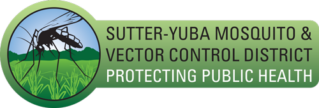DEET N,N-diethyl-3-methylbenzamide also known as N,N-diethyl-m-toluamide
DEET was approved and marketed in 1957. It has been applied to millions and millions of people in various concentrations from 4% to 100% for almost 60 years. It is by far the most well studied repellent available today. From 1960 to 1999 there have been less than 40 major incident reports associated with the use of DEET, which is very small considering the immensely vast numbers of DEET applications that have been made over the years. US EPA studies have found DEET to be slightly toxic by oral, dermal and eye routes of entry. No direct link between DEET and significant health symptoms has ever been scientifically established involving the proper use of repellents containing DEET. No evidence has shown a correlation between the use of DEET and seizures, carcinogenicity or teratogenicity when used according to label directions. Some precautions associated with the use of DEET include: It can damage some plastics and other synthetics; Do not apply to children under 2 months of age; and Do not apply DEET products containing more than 30% DEET on children. The US EPA has determined that the use of currently registered products containing DEET, when label directions are followed, will not pose unreasonable risks or adverse effects to humans. DEET is the safest, best studied, and longest-lasting repellent against malaria-carrying mosquitoes, according to the CDC. DEET is the active ingredient in about 230 different repellent products.
Picaridin 2-(2-hydroxyethyl)-1-piperidinecarboxylic acid 1-methylpropyl ester
Picaridin, also known around the world as KBR3023, or Bayrepel (trademark of Bayer AG), was developed by Bayer, who began its research for a new active ingredient in the 1980’s. Picaridin was registered by the EPA for use in 2001. Repellents containing Picaridin became available in California in mid 2005. Picaridin has been widely used in Europe and Australia since 1998. It was marketed as an alternative to DEET. Laboratory and field studies have shown similar and sometimes better efficacy with Picaridin over DEET products. Picaridin is similar to DEET in that it is slightly toxic in oral, dermal and eye exposures. No evidence suggests that Picaridin use is associated with carcinogenicity or teratogenicity. Picaridin is recommended for use on children over 2 months of age. Plastics and other synthetics are not damaged by Picaridin.
IR3535 3-(N-acetyl-N-butyl)aminopropionic acid ethyl ester
The US EPA registered IR3535 for use as an insect repellent for application to humans in 1999. This synthetic repellent has been used in Europe for over 20 years. Although it has not shown to be as effective as DEET or Picaridin, it does repel biting arthropods such as mosquitoes, ticks, biting flies and other nuisance pests. In 1997, EPA-OPP’s Biochemical Classification Committee classified IR3535 as a biochemical, based on facts that it is functionally identical to naturally occurring beta alanine, in that both repel insects, the basic molecular structure is identical, the end groups are not likely to contribute to toxicity and it acts to control the target pest via a non-toxic mode of action. This repellent is the active ingredient found in Avon Skin-So-Soft Guard Plus IR3535.
